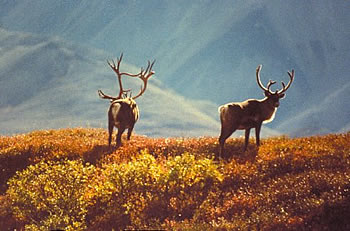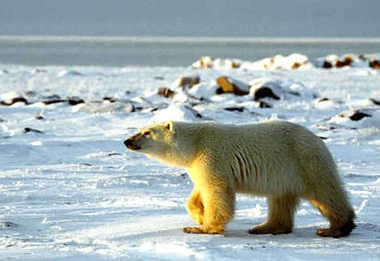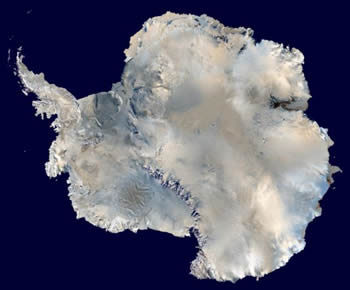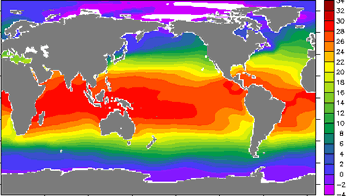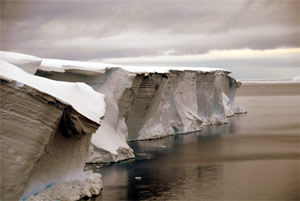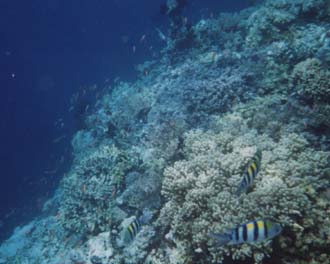Click on image for full size
Image courtesy of the USGS
Permafrost
When the ground under your feet is frozen, interesting things can happen. The land may be covered with circles, polygons, or stripes, called patterned ground, which form as the land freezes. Trees may be few and far between, their roots unable to penetrate the solid ground, leaving the land to only the short tundra plants or no plants at all. Unique hills called pingos, made mostly of underground ice, may dot the landscape, growing larger over time if more ice is added to their core. Or big blocks of land that were once flat may be thrust upward like detached puzzle pieces in areas called blockfields.
That frozen ground is called permafrost. Permafrost can have different characteristics and be found in different forms. It can contain organic-rich soil or be sandy and rocky. It can even be solid rock. It may contain frozen water or be relatively dry. But all permafrost has one important characteristic in common. It is frozen. Permafrost is ground that is below the freezing point of water (0°C or 32°F) for two or more years. Permafrost is found at high latitudes like the Arctic and Antarctic. It is also common at high altitudes - like mountainous areas – wherever the climate is cold. Today about 20% of the land surface is frozen permafrost. Permafrost is considered part of the cryosphere because it is frozen. However, it is also often considered part of the geosphere because it contains rocks and soils.
The top surface of permafrost - called the active layer – usually thaws and refreezes with the seasons. The active layer may only be half a meter thick or it may be as much at four meters thick. Plants can survive if there is an active layer because their roots can penetrate the softened active layer and they can find the water they need to survive.
In some areas of the world, permafrost extends very far underground. Under Barrow, Alaska (US) there is 440 meters of permafrost and in areas of Siberia (Russia) the permafrost is about a kilometer and a half thick. It took a long time for the ground to freeze to such depths. Shallower permafrost can form relatively quickly; the first hundred meters of ground can freeze in only several hundred years. But it took a much longer time, tens or even hundreds of thousands of years, for ground to freeze to depths of several hundred meters. For example, in a mere 350 years of cold climate the ground can freeze to about 80 meters depth, but it takes ten times as long to freeze to about 220 meters depth. Scientists estimate that it took more than half a million years for the deep permafrost underlying Barrow, Alaska to form.
Compared to the long time it took to form, permafrost has been thawing relatively quickly in recent years. Scientists have found that the rate of permafrost thaw has increased because of global warming. When permafrost thaws, the atmosphere, land, water, and living things are affected. To find out more about how global warming is changing permafrost and how changes in permafrost are affecting other parts of our planet, click here.







